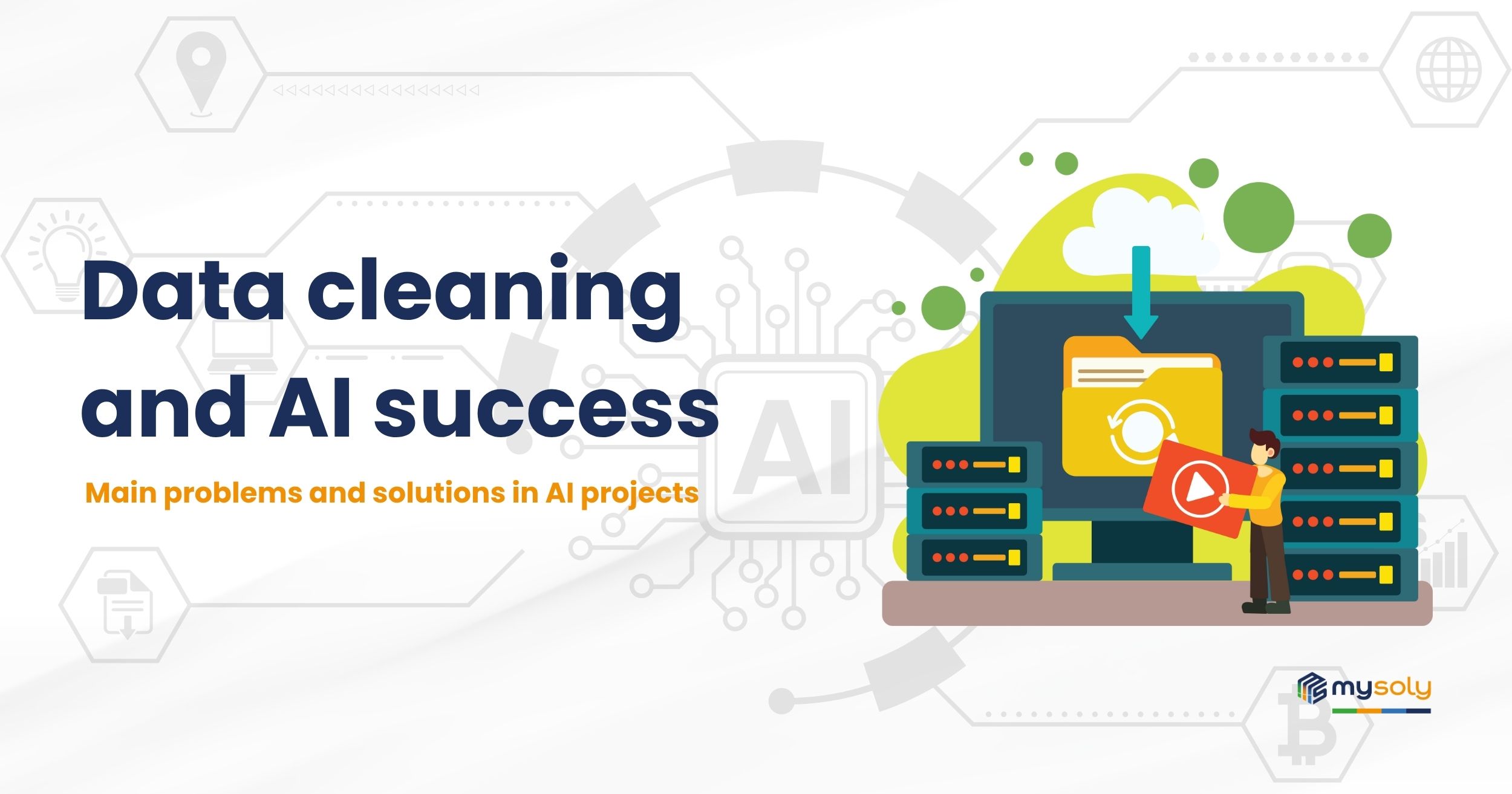Data cleaning and AI success: Clean your data for reliable AI
Introduction
The most important factor for success in AI projects is data cleaning. It does not matter how advanced your algorithm is. Because if your data is wrong or incomplete, the results will also be wrong.
As Lovelytics says, the rule “garbage in, garbage out” is still true. Therefore, datasets must be accurate, complete, up-to-date, consistent, and contextual.
In this article, we will share easy-to-understand information from recent blogs about data cleaning and AI, published in the last three months.
Why clean data matters for AI
AI models learn patterns from data. However, if the data is noisy, missing, inconsistent, or outdated, the model will learn wrong patterns and make poor decisions.
On the other hand, Lovelytics explains that high-quality data is essential for AI and lists five key qualities: accuracy, completeness, timeliness, consistency, and context.
In addition, Tkxel notes that many companies rush into AI projects but skip data preparation. As a result, these projects often fail.
According to Gartner, by 2026, 60% of AI projects without ready data will fail before producing value.
Furthermore, bad data does more than just cause wrong predictions. For example, incorrect labels make the model learn false relationships, imbalanced classes make it focus on majority data, and outliers distort the results.
Similarly, LakeFS reports that data scientists spend about 80% of their time on data cleaning and preprocessing.
Overall, this clearly shows how important data cleaning is.
Main problems and solutions in AI projects
Many companies rush into AI without proper data planning. As a result, they often face serious challenges later. Tkxel identifies three common reasons why AI projects fail:
- Fear of competition: Companies hurry to act before their rivals and start AI without a proper data foundation.
- Lack of resources: There are not enough skilled data engineers to handle data preparation.
- Pressure for fast results: Finally, managers want quick outcomes, so they choose short-term fixes instead of long-term solutions.
To solve these issues, focus on clean data. Tkxel summarizes the data preparation process in four steps:
- Collect and explore data: Gather data from all internal and external sources and analyze it.
- Clean and enrich data: Use standard formats, fill missing values, remove duplicates, and add new useful features.
- Validate and publish data: Check for type errors, invalid ranges, and broken relations before data goes live.
- Store data safely: Save clean data in a data lake or warehouse with secure access control.
In conclusion, following these steps creates a strong foundation for successful AI projects.
Steps in data preprocessing and cleaning
LakeFS, in its article “Data Preprocessing in Machine Learning,” explains that real data always includes errors, noise, and missing values. Therefore, preprocessing is necessary to ensure data quality and reliability. The main steps are:
- Collect the dataset: Get data from all sources to avoid silos.
- Import libraries and datasets: Next, load needed tools and data into the system.
- Check missing values: Then, delete or fill them with averages or medians.
- Encode data: After that, convert text data into numbers.
- Scale features: In addition, bring values to similar ranges using Min-Max or Z-score.
- Split data: Finally, create training, validation, and test sets.
Moreover, LakeFS lists several best practices for data cleaning: data reduction, transformation, enrichment, and validation. These actions make raw data ready for machine learning and improve model performance.
Advanced techniques for large-scale ETL pipelines
According to Prophecy’s blog “10 Data Cleaning Techniques,” there are several smart methods for cleaning data in large systems. However, it notes that traditional row-by-row validation can be too slow and consume too much memory. Therefore, modern approaches are needed to handle big data more efficiently. Here are some of the advanced techniques they recommend:
Technique | Purpose / Benefit |
|---|---|
Lazy evaluation | Processes data in small parts to avoid memory issues |
Distributed deduplication | Finds duplicate records efficiently across big data |
Context-aware validation | Uses ML to detect only true errors based on data patterns |
Schema drift detection | Detects upstream schema changes before pipeline failures |
Pushdown optimization | Cleans data close to the source to reduce data movement |
Smart sampling | Gives quality insights without processing all data |
Real-time quality scoring | Scores streaming data instantly for quick fixes |
Incremental cleaning | Reprocesses only changed or affected records |
Cross-system validation | Checks referential integrity between systems |
Adaptive imputation | Fills missing values using ML-based methods |
As a result, these methods make data cleaning scalable and efficient, and they are especially useful for teams working with distributed data systems.
Data governance and continuity
Data cleaning is not a one-time job; instead, it requires continuous monitoring and governance.
According to Lovelytics, data governance enables effective AI by defining key data elements, assigning data owners, applying validation rules, and tracking any issues that may arise. As a result, with strong governance, organizations can launch models faster, meet regulatory requirements, and scale efficiently.
Furthermore, Tkxel adds that proactive data profiling, automated cleaning pipelines, validation protocols, monitoring systems, and access control help maintain AI performance over time. In doing so, these measures prevent data quality from degrading and detect potential problems early. Additionally, good governance supports privacy and ensures compliance with data protection laws.
Finally, LakeFS highlights the importance of data versioning — tracking different versions of datasets over time. Through versioning, experiments can be repeated, traceability is ensured, and changes can be safely reverted if necessary.
Conclusion
AI success is not only about having a good model; it depends directly on how well you perform data cleaning. Bad data misleads models, increases risks, and hurts business decisions. The reviewed blogs show that ensuring accuracy, completeness, timeliness, consistency, and context in your data is essential for AI readiness.
- Tkxel focuses on data collection, cleaning, validation, and storage.
- LakeFS emphasizes transformation and enrichment.
- Prophecy offers advanced methods for large-scale systems.
Finally, data governance, proactive profiling, and versioning are key for long-term quality.
Remember: data cleaning is not a cost — it is the foundation of your AI investment.
With clean data, your models will be faster, more accurate, and more reliable.
Review your data now and strengthen your cleaning processes — because without clean data, AI cannot deliver real value.
👉 Learn how to apply AI effectively in Power BI — read our guide on 7 practical ways to deliver value in 2025.
References:
- Falthzik, E. (15 August 2025). Data Quality = AI Readiness: Clean Data Must Be Your First AI Investment. Lovelytics. Accessed: 4 October 2025.
- Cheema, S. et al. (28 July 2025). AI Starts With Clean Data – Here’s How to Get There. Tkxel. Accessed: 4 October 2025.
- Novogroder, I. (21 July 2025). Data Preprocessing in Machine Learning: Steps & Best Practices. LakeFS. Accessed: 4 October 2025.
- Prophecy Team (6 & 15 July 2025). 10 Data Cleaning Techniques That Prevent Pipeline Failures. Prophecy. Accessed: 4 October 2025.
- Tkxel Team (2025). AI Starts With Clean Data – Blog data and steps. Tkxel. Accessed: 4 October 2025.
Note: The full text of “Fueling AI with Accuracy: How Clean Data Drives Better Outcomes” (Flycatch/MotivityLabs) was not available. The summary is based on public information.



